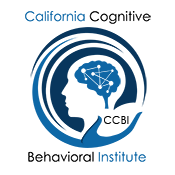Posted November 19, 2022 | Reviewed by Vanessa Lancaster. Psychology Today
KEY POINTS
- Friendships are important relationships, some of the most important we have throughout life.
- A new paper uses an intriguing method to identify and define the five key features of friendships and how they change over time.
- Themes the researchers found to define the friendships included behavioral, cognitive, and affective processes and structural characteristics.
- Knowing what’s important in a good friendship can help you foster the ties that will bind you throughout life’s shifting course.
Relationships with friends are an important but under-researched source of well-being throughout life. Friendship research tends to focus on children or adolescents but rarely peeks inside the qualities that sustain friendships once people enter adulthood. Yet, if you think about the aspects of your life that bring the most satisfaction, it’s likely that your friends are high up on the list. What may be responsible for the disconnect between real life and academic psychology?
As you ponder this question, it might immediately occur to you that friendships are actually not all that easy to define, much less investigate. You could be friends with someone you’ve known from childhood or have become recently very close to parents in your child’s school. Perhaps you consider your best friend someone you see every day at the gym or a coworker who is having problems at home that are similar to yours. The potential variety of friends is seemingly endless. Who would you nominate to put under the microscope if you had to report on just one of these friends to an investigator?
The Shifting Winds of Friendship Dynamics in Adulthood
As difficult as it may be to identify the most important friend in your life right now, think next about those friends you had when you were younger. How many of them do you still consider close? How do those relationships differ from the newer ones you’ve made? Your best friend from high school may live far away from you now, but perhaps there are features of that friendship that you feel are not replaceable. What do you think are the differences between what your oldest friends mean to you compared to the ones you’ve recently acquired?
According to a new study on friendship in early adulthood by Turkish psychologist Çigdem Yavuz Güler and colleagues (2022), “In line with the changing needs of individuals in their life cycle, the way people perceive and define friendship and their expectations of friendship change” (p. 3). This point reinforces the importance of taking a developmental perspective when examining friendship relationships. Indeed, as the authors observed, “Although friendships decrease in terms of quantity in adulthood, the nature of the relationships gets deeper” (p. 4). Late in life, although some of those older friends may no longer be around, friendships formed with neighbors can instead sustain mental health.
The authors noted that it’s important to set forth a definition of friendship, as this can have many meanings. This is the definition they offer: “friendship can be defined as a voluntary and mutual relationship, involving companionship, a shared history, intimacy, and mutual appreciation plus friends treating each other as peers” (p. 25).
With this definition in mind, you might recognize that the period of “emerging adulthood” (ages 18 to 30) could present unique aspects in friendship formation. The Turkish authors (from Istanbul’s Fatih Sultan Mehmet Vakıf University) decided to use this period of life to inform their understanding of some of these dynamics.
Finding the Ties That Bind
Using a focus group method on samples of both university and non-university early adults, the Turkish researchers conducted interviews in small groups recruited through online methods. In a focus group, participants share ideas about questions posed by the researchers. The researchers can then analyze their responses through software intended to identify major themes. This is an excellent approach in areas of research in which there are no well-established questionnaire measures.
Here are sample questions to give you an idea of what took place in the focus groups. See how you would answer them:
- What does friendship mean to you?
- What does your best friend mean to you?
- Does your friendship affect your life habits?
- Has your perspective on friendship changed over time?
- What do you share with your best friend?
- Do you argue with your best friend? What do you argue about? How do you solve the conflict?
Now that you’ve done some thinking about these issues, you should be able to relate to the major themes that Güler and her colleagues identified using their text-based analyses. They fall into these categories, with examples shown in each:
Behavioral processes:
- Sharing emotions, thoughts, and activities
- Spending pleasant and enjoyable moments together
- Providing financial or emotional support
- Maintaining boundaries even while having a relationship
- Self-sacrificing for the good of your friend
Cognitive processes:
- Trusting your friend; feeling safe
- Being in harmony; complementing each other
- Willing to maintain the friend relationship
- Being attentive, careful, and respectful
Affective processes:
- Having an emotional bond and feeling affectionate
- Feeling that the person fills an important gap
Structural characteristics:
- Being transparent, sincere, and honest
- Having similar qualities as your friend but also enjoying the differences
- Reciprocating emotions and behavior
Developmental qualities specific to emerging adulthood:
- Contributing to the other person’s growth
- Accepting the friend’s flaws
- Learning from prior friendship experiences
- Establishing attachmentbonds
- Becoming partners in life
Turning the Friendship Lens Onto Yourself
Now that you’ve read through the five key features of friendships, how does your closest one measure up? When you reach the last category specific to emerging adulthood, you might further ask yourself whether the friendships you have now (if you are past this period of life) would differ from those you had back then.
If you are an emerging adult, you might take this exercise in the opposite direction and ask yourself how it might change. Perhaps the key distinction for younger vs. older adults has to do with fitting a friendship into a larger social structure, the one that develops as your range of experiences widens. However, regardless of age, you can still contribute to the growth of your closest friend. It might also take more effort to maintain that sense of being “partners in life,” but deep down, this may be a quality that has endured over time.
Looking back at the previous four features of friendship, how many boxes can you check off when it comes to the person you consider your closest friend? Would you go out of your way to help this person, even if it comes at some cost to you? Do you and your friend share a good laugh from time to time? Behaviorally, given that you may have other competing obligations for your time, do you still manage to set aside an afternoon or evening for just the two of you? With respect to your own partner and children, are some bonds beginning to grow that involve them as well?
To sum up, the Güler et al. study outlines the basic framework of adult friendships and suggests areas in which they can change and grow. All relationships have the potential to affect an individual’s well-being. Friendships have distinctive features that can contribute to that well-being, particularly as you gain insight into the factors that can help them realize their ability to contribute to your fulfillment and that of your friend over the course of your life.

